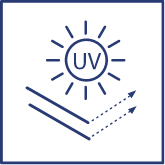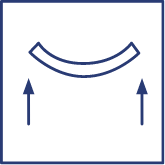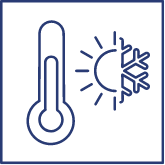Glass is naturally fragile. Toughened glass provides a safety feature upon breakage as the pane shatters into tiny pieces. It is used in an increasing number of applications where safety glass is required in accordance with BS-EN 12600 specifications, such as doors, side screens and low-level glazing.
In addition to the safety features, toughened glass is highly resilient to thermal stress.
When glass is placed through the toughening process, the internal stresses within its structure change, which increases the glass’s flexibility and strength.
Glass is cut to the required size and its edges are ground. This makes the glass more durable and less vulnerable to stress. The glass is then placed through a toughening furnace where it is exposed to heat of up to 750 degrees. By heating and cooling the glass quickly this changes the molecular structure of the glass and gives it a very high outer tensile strength.
Toughened glass is available in thicknesses ranging from 4mm to 10mm, which are available in the different glass types we stock; clear, low-iron, patterned, anti-sun, Ecopane, Ecoplus, Sun-Control and Eco-Clean.










